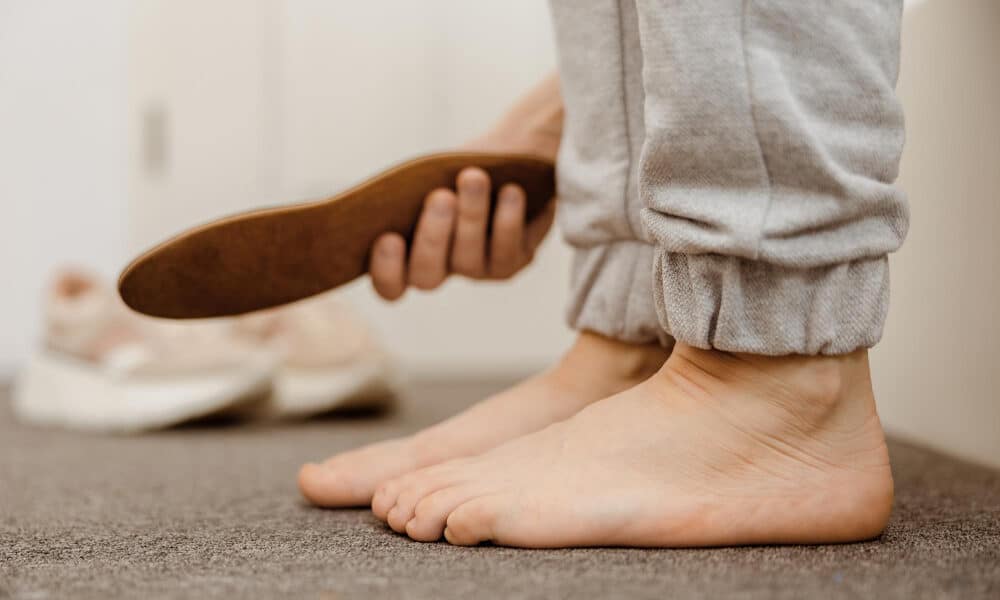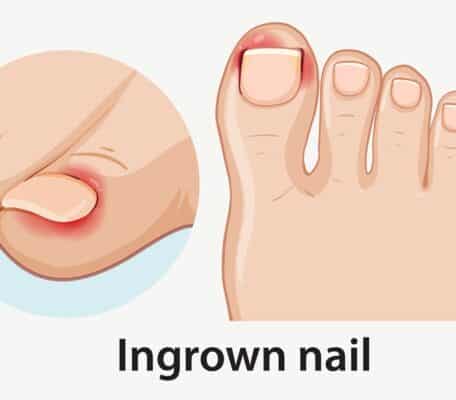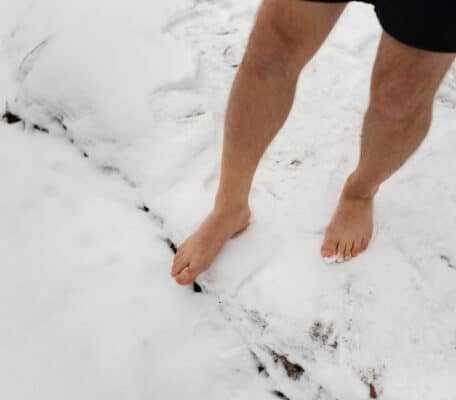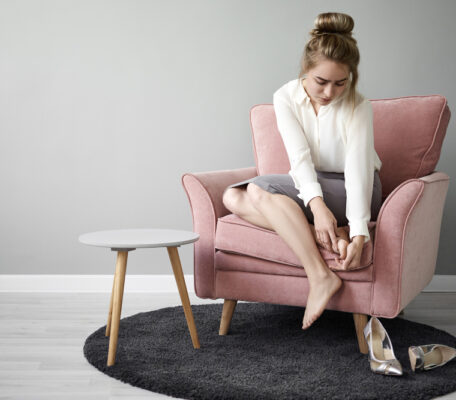Fallen arches are a condition of the feet that can cause pain and discomfort. Normally, you should see an arch in the bottom of your foot. That arch is created by the tendons in your feet. The tendons pull, which forms the arch. Sometimes, the tendons do not pull as they should, which results in the condition of fallen arches.
If you have fallen arches, your feet may look flat. You might also notice when you see your bare footprint that the arch is not visible in the print. It is fairly common for children to have flat feet, but the arch usually develops as it should as they get older. For adults, fallen arches can be quite painful and problematic.
What Causes Fallen Arches?
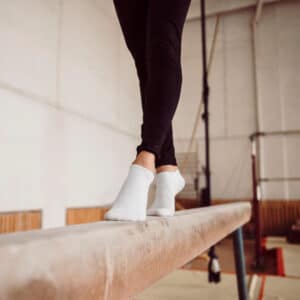 There are several factors that can contribute to the development of fallen arches. These factors include the following:
There are several factors that can contribute to the development of fallen arches. These factors include the following:
- Genetic abnormality;
- Torn or stretched tendons;
- Damage to the posterior tibial tendon;
- Bone fractures;
- Dislocation of bones;
- Nerve damage;
- Rheumatoid arthritis; and
- Other medical conditions.
In addition, there are other factors that can increase your risk of developing fallen arches. These risk factors include:
- Diabetes;
- Pregnancy;
- Obesity; and
- Aging.
What Are the Symptoms of Fallen Arches?
Some people have fallen arches, and they aren’t even aware of it; fallen arches are sometimes asymptomatic and do not always cause pain. However, for others, the following symptoms may be present:
- Foot pain, particularly in the arches or heels;
- Leg or back pain;
- Feet feel tired quickly;
- Swelling in the feet; and
- Difficulty moving the feet.
What Are the Treatment Options for Fallen Arches?
If you have fallen arches, but you are not experiencing any symptoms, then you probably do not need to seek treatment. If you are experiencing discomfort due to fallen arches, there are several treatment options. These treatment options include:
- Elevating the feet and applying ice to ease discomfort and reduce swelling;
- Rest;
- Exercises to stretch the feet;
- Physical therapy;
- Medication, such as anti-inflammatories;
- Steroid injections; and
- Orthotic devices or customised arch supports to wear in the shoes.
If you have fallen arches and periodically experience pain related to that condition, it is a good idea to get custom orthotics devices or custom arch supports, to wear in your shoes. The other treatment options, like medication and ice, will help to ease pain from fallen arches after you have already begun to experience pain. However, orthotic devices or (custom arch supports) can help to prevent pain from occurring at all. This preventative measure helps many people with fallen arches to avoid pain and prevent worsening of their condition. In severe cases of fallen arches, surgery may be required to correct the problem.
You can also help to prevent pain and exacerbation of fallen arches by reducing your risk factors. If you are overweight, try to lose weight. Even a small weight loss can reduce the pressure on your feet significantly. If you are diabetic, manage your blood sugar as best as possible. Losing weight often also improves the condition of diabetics. You should also avoid high-impact activities, like running on the road, tennis, and sports that involve jumping. Try a gentler form of exercise, like swimming, instead.
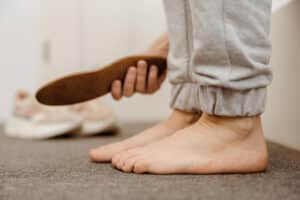 If you have fallen arches, orthotic devices or (custom arch supports)are an important component of your treatment and can help to prevent pain. You can learn more about getting custom arch supports to treat your fallen arches by contacting Foot Solutions in your area. We can custom fit an arch support just for you to make sure that you are as comfortable as possible. Call Foot Solutions to learn more about our services today.
If you have fallen arches, orthotic devices or (custom arch supports)are an important component of your treatment and can help to prevent pain. You can learn more about getting custom arch supports to treat your fallen arches by contacting Foot Solutions in your area. We can custom fit an arch support just for you to make sure that you are as comfortable as possible. Call Foot Solutions to learn more about our services today.

